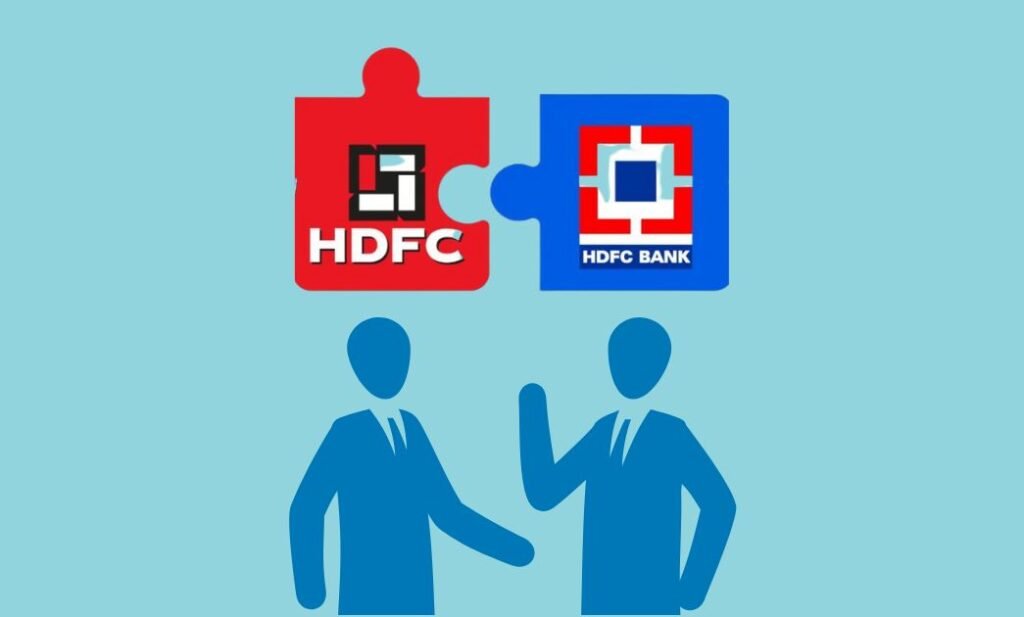Did you hear about what happened on July 1, 2023? HDFC Limited and HDFC Bank merged, and it was a huge deal! Do you know why? Well, this merger made them the fourth-largest bank worldwide! The only banks ahead of them are JP Morgan Chase & Co, Industrial and Commercial Bank of China Ltd (ICBC), and Bank of America. HDFC Bank’s market value is even higher than Bank of China and Royal Bank of Canada now! Quite an achievement, right?
Oh, and by the way, all of HDFC Limited’s subsidiaries and associates will now be part of HDFC Bank. And guess what? The merged entity is now the seventh most valuable bank in the world! Their market capitalisation as of today stands around ~$154 billion (around Rs. 12.66 lakh crore)!
Let’s read more about this much-talked-about merger!
History of the HDFC merger
In 2022, on April 4th, HDFC Limited, India’s biggest housing and finance corporation, announced a merger with HDFC Bank, one of India’s largest private banks. This has been observed to be the largest merger in India’s corporate history. Post the merger on July 1, 2023, the merged entity is worth a whopping Rs. 18 trillion!
You may ask, what was the purpose of this merger? HDFC Ltd and HDFC Bank wanted to combine their strengths and become a powerhouse with a strong net worth and balance. With this merger, they can dish out even more loans for homes and infrastructure projects.
And here’s the cool part – by joining forces, they can tap into the massive customer base of over 68 million people from HDFC Bank.
All said, what are the shareholders looking at? Let’s find out.
How will the merger impact different shareholders and the markets?
After the merger, HDFC Bank will be totally owned by the public. And guess what? The current shareholders will still hold a cool 41% bank ownership.
After the merger, the new entity will primarily focus on home loans, which comprise almost one-third of HDFC Bank’s portfolio. This merger will also create opportunities for cross-selling, which means the new entity can offer customers a bunch of different products like savings accounts, loans, credit cards, insurance, and investments.
As part of this merger, HDFC Bank is giving out over 311 crore new bank shares to the shareholders of HDFC Limited. But what does that mean for you? For every single share you have in HDFC Ltd, you’ll be getting 1.68 shares of HDFC Bank. So, let’s do some quick math. If you currently own 100 shares of HDFC Ltd, you’ll get a grand total of 168 shares of the newly merged entity. That’s like doubling your share party!
But wait, there’s more! The paid-up share capital of HDFC Bank will skyrocket from Rs 559.2 crore to a massive Rs 753.8 crore. HDFC Bank is on the rise, aiming to become India’s second most valuable company in terms of market capitalisation. It will trail right behind Reliance Industries Ltd!
Currently, if you look at Nifty, HDFC Bank holds about 9.23% of relative weightage, while HDFC itself contributes 6.16%. Put them together, and they make 15.39% of Nifty. With this merger, Reliance Industries won’t be sitting at the top anymore (RIL has a relative weightage of around 10%).
The merger has made significant noise in the market. But will it be able to live up to the flair? Only time shall tell!
Conclusion
In conclusion, the merger of HDFC and HDFC Bank is being viewed as a landmark deal that will create a financial powerhouse with a diversified portfolio, a large customer base, a strong capital position, and a robust distribution network. The merger will also benefit the customers of both entities, who will have access to a wider range of products and services, and the shareholders, who will enjoy enhanced value creation and growth prospects. The merger is expected to be completed by July 2023, subject to regulatory approvals and other customary closing conditions.
